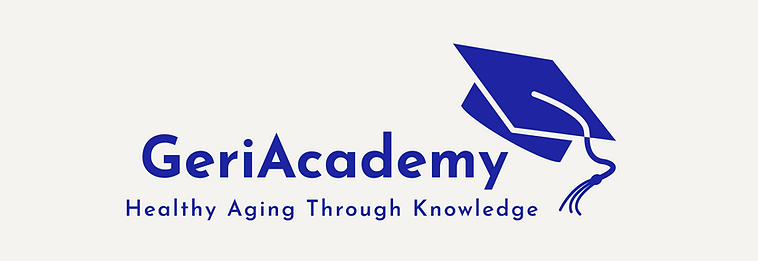How do we age, and how does aging increase our risk of developing chronic disease?
In this post I want to take both the concepts I know as a gerontologist and as a geriatrician to write about the impact of aging on physical health leading to chronic disease.
It is not a surprise that we are living longer, and the number of older adults is increasing. By 2050 there will be approximately 89 million Americans 65 years and older (CDC), that is twice the number from 2010. By 2030 the last of the baby boomers will turn 65 years old, and by then one in every five Americans will be an older adult.

The risk of developing chronic disease increases with age
Leading causes of death due to chronic disease
Heart Disease
Cancer
Chronic Respiratory disease
Stroke
Alzheimer’s disease
Diabetes
Influenza and Pneumonia
Basics of aging and aging theory
Essentially every part of our body experiences aging on a cellular level. For every individual these changes occur slightly differently, and at a different rate. In gerontology we talk about the theories of aging, this is a huge area of study, hundreds of books and articles have been written on this topic. Basically genetics, behavioral and environmental changes impact the way we age.
Age related changes will happen, there is no stopping it. We must accept that we age, adjust our behaviors and environment if possible, with a focus on disease prevention and management. Most chronic disease can be prevented; poor behaviors can cause an individual to age faster.
How does each system age and what does it mean?
Heart and vessels – with aging the muscles of the heart start to waste, the vessels that are connected to the heart carrying oxygen to the rest of the body can start to build plaque which is fatty material on the inner walls leading to loss of artery elasticity. These changes can lead to heart failure, increase in blood pressure, abnormal heart rhythms, decrease in the ability to tolerate exercise, low blood pressure with standing causing dizziness.
Lungs- Our lungs exchange oxygen, as we age the lung tissue can lose its elastic properties, the parts of the lung that exchange oxygen can start to waste, in addition to decrease in breathing muscle strength may make it more difficult to meet our oxygen demands. Compounded with behaviors such as smoking can lead to COPD.
Brain- The brain shrinks, nerves and nerve fibers decline, decrease in certain hormones that control our mood, sleep, eating, and digestion. As a result, we have increased risk of stroke, experience age related memory changes or possibly dementia. Increased risk of developing depression, more sensitive to medications such as pain medications, anesthesia.
Liver and Gallbladder- Decrease in liver size, more difficult to absorb and stabilize cholesterol which can lead to high cholesterol.
Stomach and bowels- Decrease in gastric acid production, decrease in calcium and iron absorption, discomfort after eating due to passage related changes due to weakened muscle tone, decrease in number of taste buds leading to decrease appetite.
Endocrine System- this system is a collection of glands that produce hormones that regulate body function. As we age, we experience decrease testosterone, growth hormone, insulin, thyroid hormone, other essential hormones. Because of these changes we are at higher risk of infection, diabetes, weight gain, may experience always feeling cold or hot, may not have a fever when sick.
Musculoskeletal system- Decrease in muscle mass, the cartilage (rubber-like padding covering and protecting the end of our bones at the joints) dries and deteriorates, our bodies ability to build bone slows down, and our bones become brittle and weak. As a result of these changes we lose muscle strength, height, our posture changes and we tend to stoop, we may develop osteoporosis.
Skin- Our skin becomes thinner, loss of elasticity, we lose the fat protective layer, wasting of sweat glands. As a result, we have dry skin, difficulty regulating body heat, wrinkling, more sensitive to sun, at higher risk for pressure ulcers, and longer wound healing time.
Sensory system
Sight- Difficulty seeing, sensitivity to glare, have difficulty with depth perception which can lead to falls, difficulty differentiating blues, greens and violets, and develop dry eyes. Increased risk of cataract and glaucoma.
Hearing - Increased ear wax, changes in the inner ear, and loss of hair cells. Tiny hair cells in the inner ear help with hearing, they pick up sound waves and change them into signals that the brain interprets as sounds, with aging those tiny hair cells become damaged or die and they do not regrow. Hearing loss can lead to isolation, frustration when there is background noise or when speech is rapid.
Taste- Decrease in the number of taste buds, our ability to taste sweet and salty changes, bitter and sour taste remains the same.
Touch- Loss of sensation leads to decreased ability to recognize environmental dangers such as hot water, fire, small objects.
Smell- Sensitivity to smell decreases only slightly, but complete loss of smell is not a normal part of aging.
What else?
Healthy behaviors can slow the aging process and prevent chronic disease
The implications of chronic disease are huge, can include decreased quality of life, loss of independence, and death.
The risk of developing chronic disease increases with age, the root causes of many diseases begins early in life.
What can you do?
Follow up with your primary care provider for preventative visits
Make physical activity a part of your routine
Ensure you have a balanced diet, avoid processed foods
Ensure you are immunized
If you would like to learn more about aging well, disease prevention please join my mailing list, there will be a new blog weekly with related topics.
